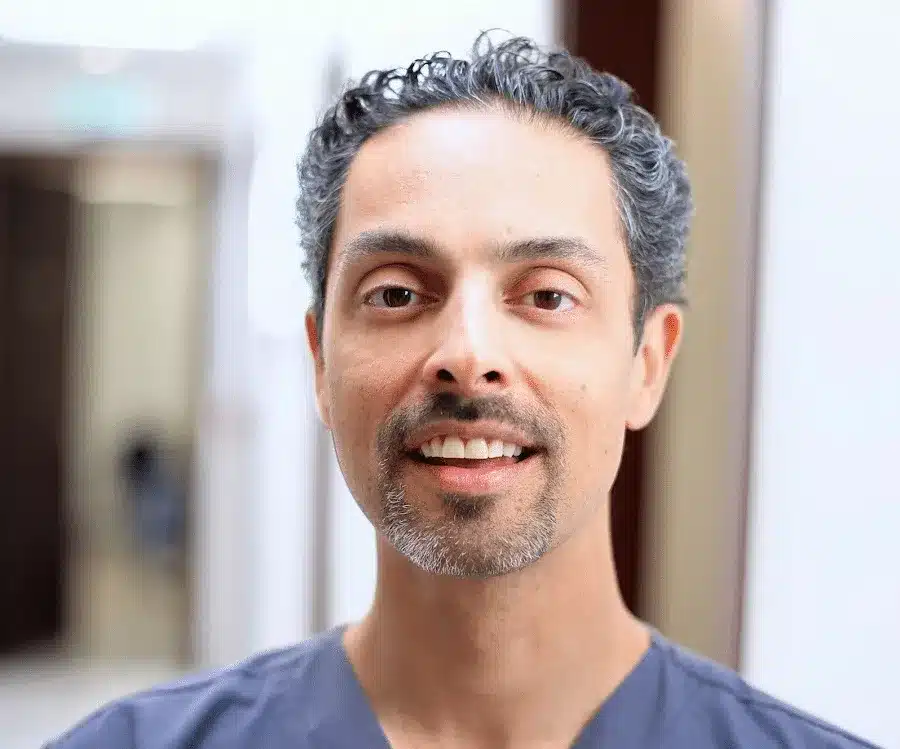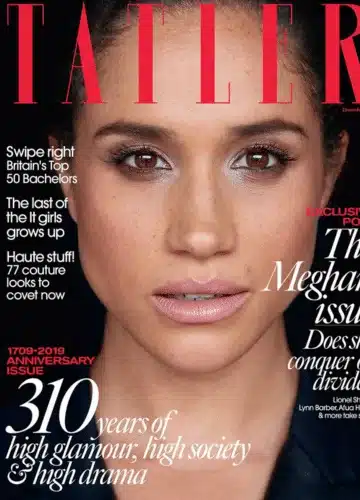Blepharoplasty and Eyelid Surgery in London



Blepharoplasty Surgery on Harley Street, W1
Discover Eyelid Surgery in London
Due to a combination of ageing and genetics, the skin and muscle around the eyelids loosen, resulting in loose skin, puffiness and dark rings that may give you a tired appearance. In addition, there are often changes in the anatomy that result in puffiness owing to fat protruding into the eyelids forming bags in the lower and upper eyelids.
Eyelid surgery rejuvenates your facial appearance, making you look fresher and less tired. The eyelid anatomy is intricate, and blepharoplasty involves reshaping excess skin, muscle and prolapsing fat.
As one of the most frequently performed procedures in facial plastic surgery, blepharoplasty is known for its quick recovery time and minimal risk. Depending on the individual’s needs, it can be carried out on the upper eyelids, lower eyelids, or both.
What Does A Harley Street Blepharoplasty Treat?
Our eyes are so important, whenever you meet someone either socially or professionally, you make eye contact. The appearance of your eyes forms part of your first impression on meeting someone, they can make you look fresh and engageing or tired and ageing. Some common eye concerns that can be improved with eyelid surgery in London include:
Excess Skin
Puffy, Bags Under Eyes
Hooded Eyelids
Obstructed Vision
Wrinkles and Fine Lines

World Class Facial Cosmetic and Plastic Surgery
Natural Blepharoplasty Before & Afters
Dr De Silva has transformed thousands of faces through his unique surgical techniques. Below is a small sample of some of his transformations.






Why Choose Dr. De Silva for Eyelid Surgery in London?
Dr De Silva trained in microscopic surgery before cosmetic surgery. In micro-surgery millimetres makes the difference between success and failure. Using these same principles of microsurgical finesse and obsession with detail, Dr De Silva can give natural-looking blepharoplasty results.
- Performs his signature Natural Blepharoplasty Technique
- Professor at the American Society of Oculo-Facial Plastic Surgery, USA
- Natural Results and Fast Recovery Technology
Only the Face
By focusing entirely on only facelift & facial cosmetic surgery procedures, Dr De Silva is able to provide the expertise that can only come with specialisation: facelift and neck lift, blepharoplasty, rhinoplasty and chin implants.
Natural Looking Results
Dr De Silva is a believer in the importance of artistry behind cosmetic results and focuses his skills at delivering natural looking results.
Fast Recovery
Dr De Silva has pioneered the advances in technology to speed up recovery with a combination regenerative medicine techniques, Oxygen and LED Therapy.
World Class Expertise
Dr De Silva also teaches other surgeons internationally and has contributed to the development of advanced surgical techniques, laser technology and stitch-less tissue adhesives.
Reasons For Blepharoplasty Surgery
Feeling that you look tired or older than you are can affect confidence and make you self-conscious, often leading to avoiding photos or social situations. Changes in your appearance may even impact personal relationships and professional interactions.
Applying makeup, like concealer, can become challenging as it no longer effectively conceals these changes. You may also notice a genetic link, seeing traits in your eyelids that remind you of your mother or father.
Perhaps you’ve tried countless creams and serums with little success, or non-surgical treatments like Plexa, only to see minor improvements of less than 10%. If you’re disappointed with these results, or if you’ve had previous eyelid surgery and are still unsatisfied, Dr De Silva is a specialist in blepharoplasty and revision blepharoplasty helping you achieve the results you’ve been seeking.
Types of Eyelid Surgery in London
Dr De Silva performs a conservative blepharoplasty that preserves the natural architecture of the eyelid, by using tissue-sparing techniques and avoiding unnecessary trauma to the intricate anatomy of the eyelids, this prevents the surgical signs of complicated blepharoplasty such as eyelid retraction or change in natural eyelid shape. Depending on your features and aesthetic goals, Dr De Silva may select one of these techniques for your surgery.
Upper Blepharoplasty
Upper blepharoplasty addresses excess skin and fat on the upper eyelids, lifting and smoothing the area. This procedure rejuvenates the eyes, reducing sagging and improving the overall appearance of the eyelid.
Lower Blepharoplasty
Lower blepharoplasty targets under-eye bags and puffiness by removing or repositioning fat. It also tightens loose skin, reducing wrinkles and dark circles, leading to a fresher, more youthful look around the eyes.
Lateral Canthoplasty
Lateral canthoplasty reshapes the outer corners of the eyes to create a more lifted and almond-shaped appearance. Often performed alongside other eyelid surgeries, it enhances the overall contour of the eyes.
Ethnic Blepharoplasty
Ethnic blepharoplasty is tailored to individuals of Asian or other ethnic backgrounds. It focuses on creating natural-looking eyelid creases while maintaining unique ethnic characteristics, improving eyelid appearance without altering identity.
Male Blepharoplasty
Male blepharoplasty addresses signs of ageing around the eyes, such as drooping eyelids or under-eye bags, while maintaining a masculine look. The procedure preserves a strong, defined eye contour while rejuvenating the area.
Revision Blepharoplasty
Revision blepharoplasty corrects or improves previous eyelid surgeries. It may address issues such as asymmetry, excess skin, or unsatisfactory results from earlier procedures, helping to achieve a more natural and refined appearance.
Blepharoplasty Testimonials
What our satisfied clients are saying
“Having Lower Blepharoplasty with Dr. De Silva gives you the benefit of years of experience, qualifications not only in the U.K. but also the U.S. and yet you don’t lose the gentle bedside manner from this doctor. From our first meeting, Dr. De Silva won me over because he gave me the time to obtain answers and explanations to all my questions in kind details, as many times as I needed.”
Sandra
In the Press
Dr. De Silva’s Harley Street Blepharoplasty Timeline
Dr De Silva customises blepharoplasty to the individual patient and most procedures take between 1.5 to 3 hours depending on the intricacy and complexity of the procedure. From Dr De Silva’s experience customised blepharoplasty surgery can last 10 years in the majority of patients and a lifetime in some patients.
Initial Blepharoplasty Consultation
Pre-surgery preparation
Day of Surgery
Eyelid surgery can be completed in 1 hour. However, to obtain the best natural results that are long-lasting, the procedure will take 1-3 hours as it will require a combination of fat transfer, fat preservation, skin resurfacing, regenerative medicine, and attention to detail.
In upper blepharoplasty, the incision is hidden in the crease of the eyelid and is often difficult to see even 1 week after surgery. In lower blepharoplasty, the incision is placed either in the conjunctiva (termed transconjunctival) of the eyelid in which case it is completely hidden. Or the incision is just below the lower lid eyelashes (termed transcutaneous) within several weeks this incision is hidden by the eyelashes of the lower eyelid. Following the removal of excess tissue, Dr De Silva will carefully contour the eyelids to restore a rejuvenated, youthful appearance. This process may involve adjusting or extracting fat, along with removing any extra skin or muscle as needed. The small incisions will be closed with sutures, surgical tape or tissue glue.
Follow-up Appointment
Social Readiness
It is normal to experience some swelling and bruising for the first week or two. This will decrease over time. It is recommended to rest for the initial fortnight following your surgery, returning to work and your daily routine from the second week onwards. Avoid exercise for the first weeks and strenuous activity for a month. After a month you will be able to enjoy your blepharoplasty results.
Ideal Candidates for Eyelid Surgery in London
Ideal candidates for blepharoplasty include:
- Those with excess upper eyelid skin affecting their field of vision.
- Individuals with puffiness or under-eye bags that create a tired or aged appearance.
- People concerned about fine lines or wrinkles around the eyes that add years to their look.
- Those with a family tendency toward extra skin or fat around the eyelids.
- Patients in good overall health, with a positive mindset and clear goals for the outcome.
- Individuals with realistic expectations who understand both the potential benefits and limitations of the procedure.
What to Expect from Blepharoplasty Recovery
The surgery generally causes mild ache or discomfort which settles over less than 48 hours, and the surgery is not regarded as painful. Most of Dr De Silva’s patients require minimal or no analgesia after blepharoplasty. Usually over the counter mild analgesia is sufficient to reduce the discomfort (e.g. Paracetamol or Tylenol).
Icing the eyelids for the first three days, in the form of ice in a zip lock bag, frozen peas or gel mask all have a beneficial effect on reducing swelling when applied to the eyelids for ten minutes regularly after surgery.
There are other factors such as resting and taking things easy during the daytime that will maintain a relatively low and stable blood pressure. Keeping your head elevated when sleeping, will also reduce bruising and swelling.
How To Speed Up Recovery
Dr De Silva has pioneered innovative techniques to accelerate recovery following blepharoplasty, using cutting-edge regenerative medicine combined with advanced oxygen and LED therapies. These approaches promote faster healing by supporting tissue repair, reducing swelling, and minimising bruising.
Regenerative medicine techniques, such as growth factor treatments and platelet-rich plasma (PRP), stimulate the body’s natural healing response, helping cells to regenerate more quickly. This can significantly reduce downtime and help patients see visible improvements sooner.
Oxygen therapy delivers concentrated oxygen to the skin, which enhances cellular activity, speeds up tissue repair, and reduces inflammation. This therapy is particularly effective in minimising bruising and swelling in the delicate eye area.
LED light therapy complements these methods by using specific wavelengths of light to calm inflammation, boost collagen production, and support overall skin healing. This gentle, non-invasive treatment can further accelerate recovery, leaving the skin around the eyes looking fresher and healthier.
Through this comprehensive approach, Dr De Silva offers patients a more comfortable recovery process, allowing them to enjoy the results of their eyelid surgery sooner and with minimal discomfort.
Benefits of Blepharoplasty Surgery with Dr De Silva
- 99% of eyelid surgery scars are almost invisible thanks to Dr De Silva’s meticulous Trans-Conjunctival blepharoplasty technique that involves incisions inside the eye and multiple layers of stitches.
- Quick recovery from anaesthesia, usually within 30 minutes
- Blepharoplasty is the #1 procedure he completes for his patients every day
- 1000s of 5* patient reviews
- Natural looking results
Risks and Side Effects of Surgical Blepharoplasty
One of the most important factors responsible for the success of surgery is the surgeon. In Dr De Silva’s hands complications are uncommon, with swelling and bruising being the most common aspects of recovery.
- Pain or discomfort is uncommon and resolves within 24 hours. Infection is very rare, and the gold standard is prophylactic antibiotics to protect against infection.
- Dr De Silva avoids the side effects of general anaesthetic (deep vein thrombosis and allergies) by using safer sedation anaesthesia.
- Two rare and serious complications are eyelid retraction and damage to vision. Dr De Silva has never had a patient of his own have these complications. However, he takes multiple levels of precautions to avoid these issues in the first place.
World Class Facial Cosmetic and Plastic Surgery
Natural Blepharoplasty Before & Afters
Dr De Silva has transformed thousands of faces through his unique surgical techniques. Below is a small sample of some of his transformations.






Blepharoplasty Price of Procedure
Combine your Eyelid Surgery with other facial enhancements
Dr De Silva customises blepharoplasty surgery for each individual patient and often combines it with other procedures such as fat transfer, brow lifting, skin resurfacing, buccal fat reduction, and face or neck lift surgery to enhance overall facial rejuvenation.
Fat Transfer
Fat transfer involves harvesting fat from one area of your body and injecting it into areas of the face that have lost volume, such as the cheeks or under-eye hollows. It is often combined with blepharoplasty to restore youthful fullness around the eyes and midface.
Brow Lifting
Brow lifting elevates drooping brows and smooths forehead wrinkles, creating a more youthful and refreshed appearance. When combined with blepharoplasty, it enhances the upper face, giving a more balanced, natural look.
Laser Skin Resurfacing
Laser skin resurfacing improves skin texture, tone, and pigmentation by removing damaged skin layers. Combined with blepharoplasty, it rejuvenates the entire eye area, reducing fine lines and enhancing the smoothness of the skin.
Buccal Fat Reduction
Buccal fat reduction removes excess fat from the cheeks to create a more sculpted and contoured facial appearance. When combined with blepharoplasty, it enhances facial definition and can complement a youthful eye area.
Facelift
A facelift addresses sagging skin, loss of muscle tone, and facial ageing by lifting and tightening the face. Combining a facelift with blepharoplasty offers a comprehensive rejuvenation of the entire face, restoring both youthful contours and a refreshed eye area.
Neck Lift
A neck lift targets loose skin, muscle bands, and excess fat in the neck, creating a smoother, more defined jawline. Combined with blepharoplasty, it enhances both the eyes and neck for a harmonious, rejuvenated appearance.
Is Dr. De Silva the right fit for your Eyelid Surgery in London?
Dr Julian De Silva travelled worldwide with a fellowship in the USA and spent time working in some of the best Cosmetic centres in the World before setting up his practice over 10 years ago. This included London, UCLA Jules Stein Eye Institute in Los Angeles and Montefiore Medical Center, Albert Einstein College of Medicine in New York. Dr De Silva wrote an extensive book that includes everything each patient needs to know regarding facelift and neck lift surgery. Dr De Silva uses specialised state-of-the-art technology to improve the natural results or enhance recovery or longevity of the procedure including oxygen therapy and regenerative medicine. In addition, Dr Julian De Silva has pioneered the use of sedation anaesthesia in the UK and has been awarded a Patent for his innovation. Dr De Silva has always taken pride and constantly innovated on improving natural results and faster recovery with over 1000 5* reviews was voted the best in plastic surgery in the UK on an independent review site.
Interested in Eyelid Surgery in London?
Dr De Silva is dedicated to delivering the highest standard of patient care which is what makes him a premier choice for Blepharoplasty surgery across the UK.
Frequently Asked Questions
Does Dr De Silva Take An Artistic Approach To Facial Aesthetics?
Dr De Silva is an artist having painted for exhibitions in London at the Royal Academy of Arts and National Portrait Gallery and a sculptor of clay. The sculpting of the human face to balance the proportions of the face and body type requires both artistic interpretation and technical know-how.
Is there much discomfort or pain after blepharoplasty surgery?
The surgery generally causes mild ache or discomfort which settles over less than 48 hours, and the surgery is not regarded as painful. Most of Dr De Silva’s patients require minimal or no analgesia after blepharoplasty. Usually over the counter mild analgesia is sufficient to reduce the discomfort (e.g. Paracetamol or Tylenol).
Are the scars noticeable after blepharoplasty surgery?
Upper Blepharoplasty Scar at 6 weeks: All scars are initially slightly pink in colour and lumpy and bumpy in appearance. Over a period of weeks to months, the colour returns to normal and the scar smoothes out. Dr De Silva takes care to hide scars in natural lines and creases and avoid scars wherever possible. Issues with scars are relatively rare and occur in less than 1%. Key is the detail, Dr De Silva does not use dissolvable stitches in this delicate area, as these can result in more visible scars afterwards.
Lower Blepharoplasty at 6 weeks: No scar is visible. Dr De Silva prefers to avoid scars in lower eyelid surgery by hiding the scars and completing the surgery on the inside of the eyelid. There are a small proportion of patients who may not be suitable for this technique however each patient’s surgery must be tailored to the individual to give the best possible natural-looking result.
What are the potential risks and complications of blepharoplasty?
Blepharoplasty is the most common cosmetic procedure to be completed in the world and is regarded as a safe procedure. As with any surgery, there are potential risks and complications that may occur.
Complications in blepharoplasty may occur because of several reasons. One of the most important factors responsible for the success of surgery is the surgeon. The surgeon must have complete knowledge of how the surgery has to be performed. Blepharoplasty, particularly of the lower eyelid is demanding and requires in-depth knowledge of the anatomy and attention to detail. Dr De Silva’s number one procedure is blepharoplasty and revision blepharoplasty.
Complications can be defined as any unforeseen occurrence during or after the surgery. The complications that can occur during or after blepharoplasty can be divided into four categories; intra-operative, immediate post-operative, early and later post-operative.
Intraoperative complications occur during the surgery. For example, these can occur due to a reaction to some medication or due to the local or general anaesthesia given and are managed by the surgical team at the time of surgery.
Immediate postoperative complications occur immediately after the surgery when the patient is in the initial recovery stage and may include bleeding or medication. These complications need to be handled immediately by the surgeon who performed the operation.
Early post-operative complications in blepharoplasty occur once the patient has been discharged. These appear almost immediately after the person returns to normal routine. They can include bleeding, a reaction to a medication, or infection and can be corrected by contacting the doctor immediately.
Late postoperative complications associated with blepharoplasty may occur when the patient fails to take proper care after the surgery, the surgical technique used or the patient’s healing process. These complications include those of the upper eyelid (asymmetry, scarring, hollowing, inability to close the eyes, dry eyes) and lower eyelid (asymmetry, residual fat bags, lower lid retraction). Most of these complications are minor and can be easily corrected, however, some such as lower lid retraction require complex revision surgery with the use of graft material and reconstructive techniques.
The most common complications are bleeding and bruising, all of which are treatable. There is a risk of asymmetry between the two eyes and this may settle with time or in approximately <5% of cases may require a small revision procedure that can be completed under local anaesthesia. The most serious and feared complication of blepharoplasty is loss of vision following surgery, as a result of bleeding that collects behind the eye, this is an extremely rare complication and if recognized early on it can be treated. Blepharoplasty is generally a popular surgery with high patient satisfaction and low risk of complications.
Can I have blepharoplasty under local anaesthesia alone or do I need general anaesthesia?
Patients are able to have upper blepharoplasty under local anaesthesia alone, sedation or general anaesthesia. Dr De Silva has used all of these for his patients for more than 10 years, Sedation Anaesthesia offers the advantage of a more comfortable experience and faster recovery. Blepharoplasty may also be completed under local anaesthesia, however, the eyelids are sensitive and delicate and the use of sedation is a useful adjunct for surgery. For best natural results eyelid surgery is often combined with other procedures such as fat grafting and skin resurfacing, with these additional procedures light sedation is generally preferred. General anaesthesia is not a requirement of blepharoplasty and is associated with more recovery and potential side effects can be avoided. Dr De Silva takes time to advise each patient on the best type of anaesthesia for them. His team have pioneered the use of faster recovery sedation, aka twilight anaesthesia in London, UK and has been awarded a patent for their innovative sedation anaesthesia technique.
How do I choose a blepharoplasty surgeon?
Choosing the right blepharoplasty surgeon is crucial for achieving the best results. Here are detailed measures to help you select a highly qualified and experienced surgeon:
Key Considerations:
- Board Certification: Ensure the surgeon is board-certified in plastic or facial cosmetic surgery. This certification indicates they have met rigorous standards in training and expertise. Within plastic surgery, Oculo-Plastic Surgeons specialise in eyelids and blepharoplasty, more than general plastic surgeons or ENT Facial plastic surgeons.
- Specialisation: Look for a surgeon who specialises exclusively in facial surgery, as this indicates a deep understanding of facial anatomy and techniques. Facial surgery is a matter of millimetres and body surgery is a matter of centimetres. Dr Julian De Silva, for example, has dedicated over 20 years to specialising in facial procedures
- Experience and Results: Review the surgeon’s portfolio of before-and-after photos to assess their skill and the naturalness of their results. Dr. De Silva has performed thousands of facelifts and has extensive experience in revision surgeries.
- Consultation: Schedule consultations with multiple surgeons to discuss your goals and assess their approach. This will also give you an opportunity to gauge their communication style and bedside manner.
- Patient Reviews and Testimonials: Read reviews and testimonials from previous patients to understand their experiences and satisfaction levels.
- Hospital Affiliations: Check if the surgeon operates in reputable hospitals or clinics with accredited facilities. Dr. De Silva operates in a top-notch state-of-the-art facility, ensuring the highest standards of care.
Contact Details
Call: 020 8748 2860
Email: info@drjuliandesilva.co.uk
Address:
23 Harley Street
London, W1G 9QN, UK
Dr Julian De Silva
5 stars based on 458 reviews

Renowned expert in Facelift/Facial Cosmetic and Plastic Surgery. Signature techniques in Blepharoplasty, Rhinoplasty and Facelift surgery. Expert in revision surgery and in natural looking results














